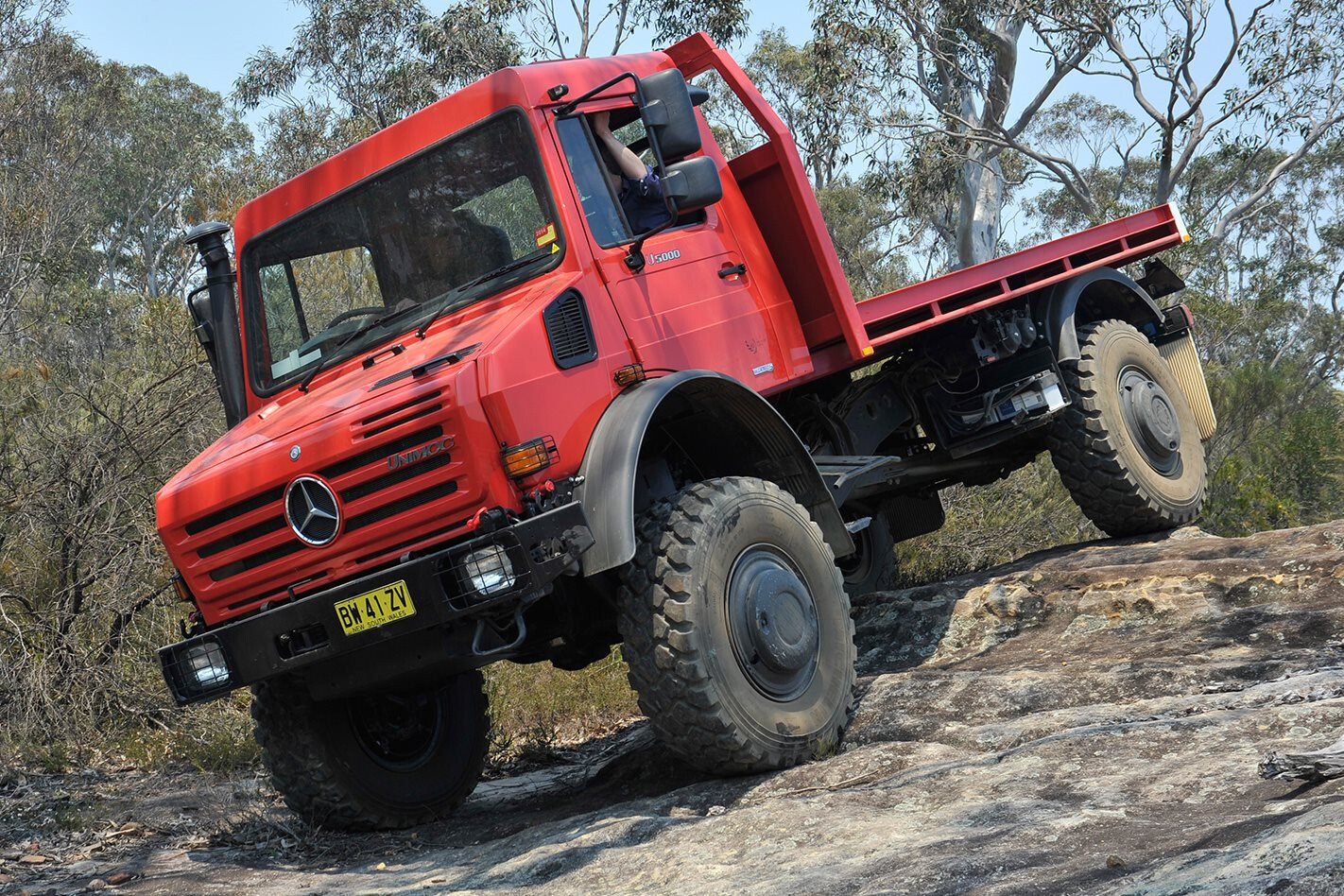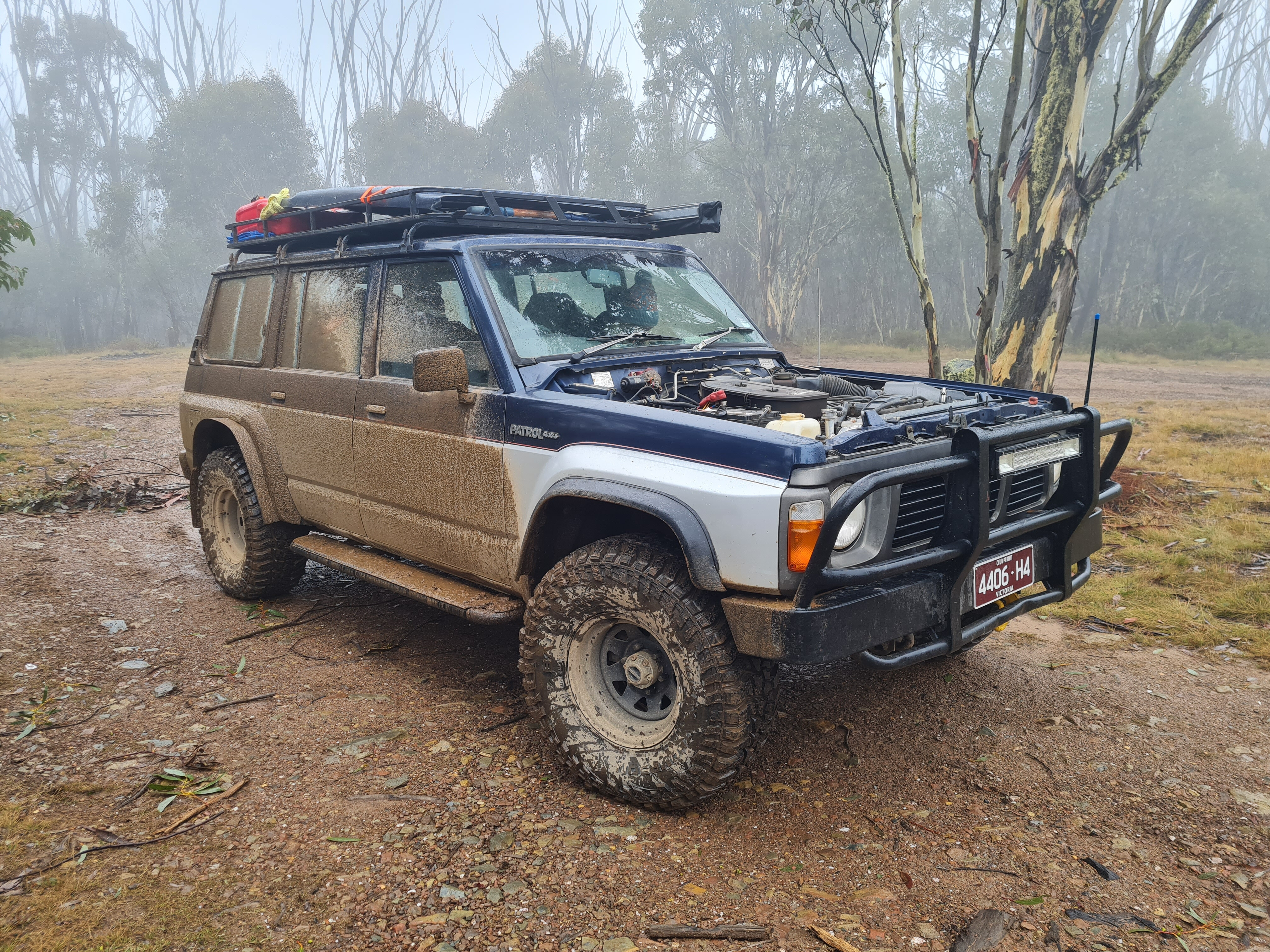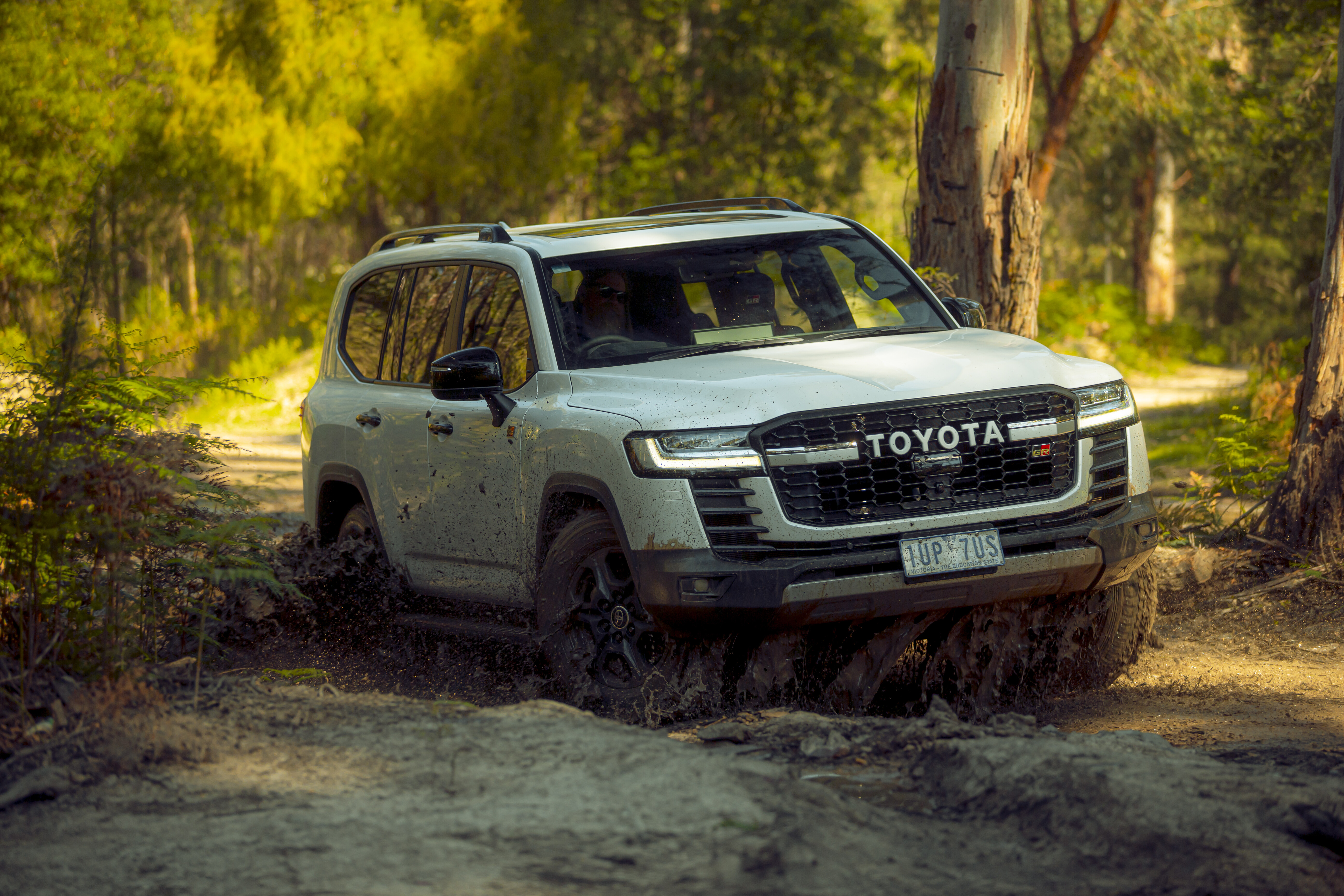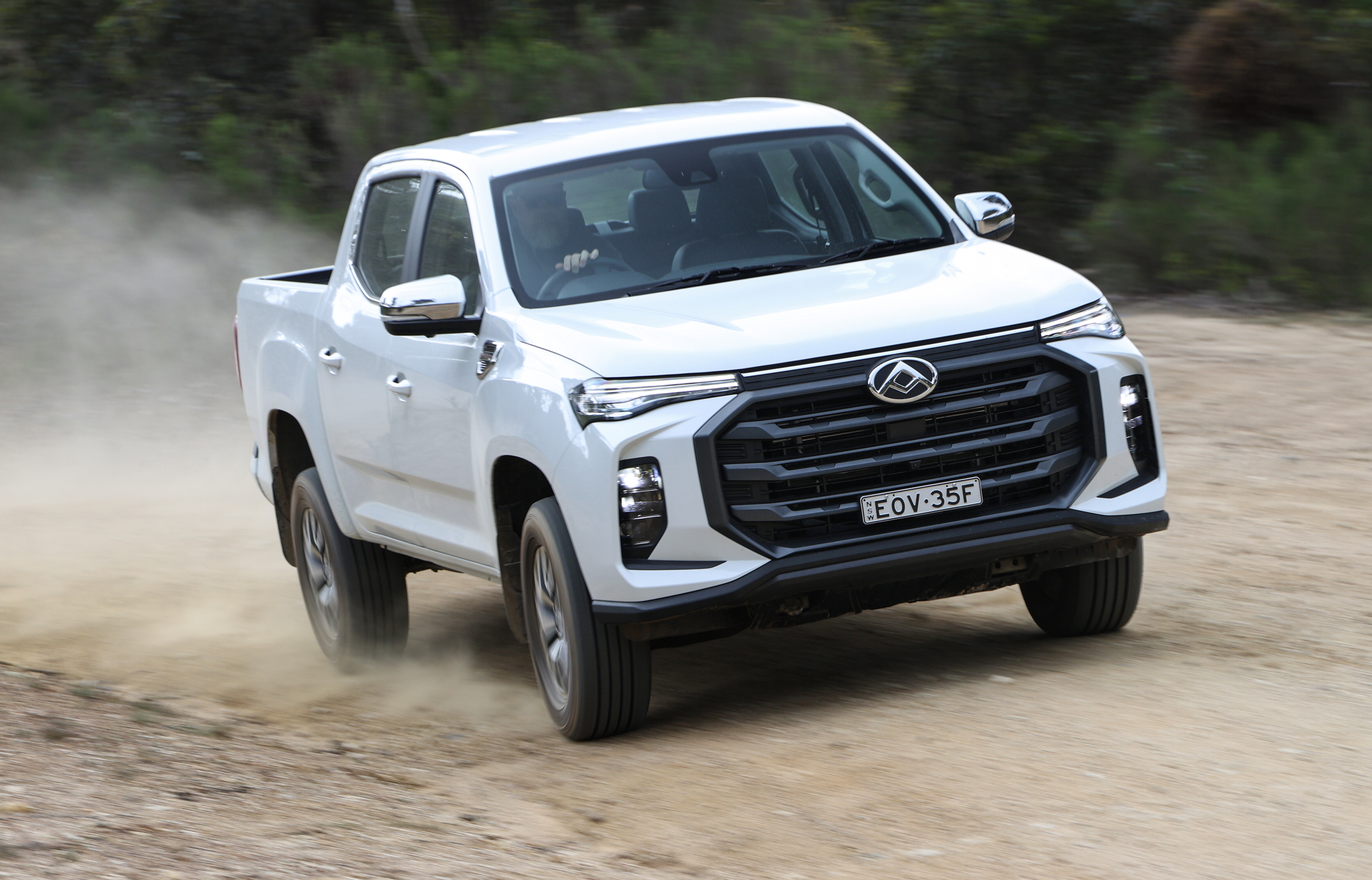IT TOWERS three metres tall, stretches six metres long, and perches on knobby tyres more than a metre high.
Originally published in January 2014 issue of 4X4 Australia.
In fire-engine red, the Unimog U5000 cuts an imposing figure on ‘Mog’ man Jim Curtin’s 110-acre property, on the Wingecarribee River in Berrima, NSW.
It’s an agricultural-looking, intimidating bit of gear, but it’s easy to drive, so I’m told… Still, to buy a bit more time before Mercedes throws 4X4 Australia the keys to the 12-tonne, $225K ute, let’s first look back at the 67-year history of the Unimog.
After World War II, former Daimler-Benz engineer Albert Friedrich set out to design a better tractor. “He said, okay I’m going to have the wheels the same size all ’round. I want the machine so it can plough a paddock during the day, it can take the produce to market, but the guy can take his girlfriend to the movies on Saturday night,” explains Philip Leslie, Mercedes’ national manager of special trucks.
“The word Unimog is from Universal Motor Gerät, which is the German word for tool.”
The first Unimog prototypes were built in 1946 by Erhard and Söhne in Göppingen, Germany, and in 1947 Boehringer began production in nearby Schwäbisch Gmünd.
Daimler-Benz took over production in 1951 at its Gaggenau plant in Baden-Württemberg, which continued until 2002. “It ended up with a star on the front,” says Leslie. “Before that it just had a ‘U’ with an Ox head in there. They used the Ox as a symbol because they said it was as strong as an Ox.”
In 1986, the Australian Army took delivery of 2258 military-spec Unimogs which were built in Oz from CKD components and, today, Mogs are used by armies in more than 25 countries.
The heavy series known as Hochgeländegängig – German for highly mobile cross-country, honest – was introduced in 1974, and 2000 brought the medium U300, 400 and 500, which was designed for municipal duty.
Manufacturing moved to Mercedes’ Wörth am Rhein truck plant in 2002, where production of the heavy series continued in the form of the new-generation U 3000, 4000 and 5000.
Today, there are three series, two of which come to Oz – the U400 and U500 (see below), and heavy U4000 and 5000.
In Europe and other parts of the world the Unimog, which enjoys a cult following in its native Germany, continues to serve as its designer intended in a multitude of utilitarian roles – military vehicle, fire truck, road-rail vehicle, troop carrier, ambulance, expedition vehicle, utility vehicle, agricultural implement … and off-road adventure machine.
There are two side steps with which you vault up into the Unimog’s driver’s seat, which, at two metres above the ground, offers a commanding view of the landscape through the upright windscreen.
Strapped into the seat, I’m presented with a large, truck-like horizontal steering wheel, an array of unfamiliar controls, and a minimum of safety or comfort equipment. There’s ABS underfoot, and air-con, for example, but no airbags.
But there is technology on board. The massive, turbocharged, intercooled in-line four-cylinder – it’s a bloody 4.8! – is ECU controlled, and the mill meets Euro 5 emissions standards with help from Benz’s Bluetec.
The system squirts urea – “bird shit” – into the catalytic converter to clean up the exhaust. The engine’s outputs are as lop-sided as its big-block four-banger design. It musters just 160kW at 2200rpm, but a towering 810Nm at half the revs.
I’m intrigued by one particular rocker switch on a panel right of the steering wheel, which is marked with a hare, and a mule saddled with a box. This, Jim tells me, is to switch from the usual eight forward and six reverse gears into eight lower, slower ‘working gears’ designed for load carrying.
Jim gives me the crash course on driving the Benz behemoth. Okay, so starting the engine is easy. Twist the key, and it settles into a marble-gargling metallic idle that shakes the cabin. The pre-selector manual is exactly that – you rock the lever forward or backward to cue your next forward or reverse ratio, and then depress the clutch to make the air-actuated shift happen.
Jim warns that I should stay in gear until the truck has come to a near standstill, unless I want to try stopping 12,000kg in neutral. Though, in fact, it’s not too difficult to pull up, thanks to powerful air-over-hydraulic brakes which, like the gear shifts, are run from the 18bar air pressure system.
A central tyre-inflation system will please the lazy man, and means there’s no getting out, or even stopping, to drop pressures, and no stopping at servos to pump up the giant 365/85R20 Michelin X tyres.
The Unimog’s actually a rear-wheel drive for highway work, with four-wheel-drive, and front and rear diff locks engaged progressively via a dial as the terrain gets tougher.
In the nearby Belanglo State Forest, the Mog’s unladen tray makes the ride punishing and sets me floating on the sprung driver’s seat with every bump, which makes smooth throttle applications difficult.
The steering is slow and a bit vague, though doesn’t require excessive effort, and the 5950mm overall length means a truck-like late turn-in is needed to avoid clipping corners and taking the scrub with you.
With tips from Jim, I get into a rhythm, lifting the throttle over bumps, and pre-selecting lower ratios and engaging them just as the revs drop, as the Mog rolls up larger lumps, before waiting until the front wheels are on the down-slope before again pressing the right pedal.
Soon, I’m immersed in making plodding progress to a satisfyingly truck-like soundtrack of drivetrain whine, punctuated by the whoosh and hiss of frequent air-shifts, and the gravelly overrun vocals of the two-stage exhaust brake.
Approach and departure angles of 45 and 49 degrees, respectively, and a ramp-over angle of 41 degrees help endow the U 5000 with near unstoppable off-roadability, which I leave it to Jim to demonstrate. Words fail to convey the ease with which the truck drives up, over and down rocks that’d stop your average lift-kitted Land Cruiser in its tyre tracks, though the pictures will help.
From the passenger’s seat, I’m presented with blue sky on the way up, and it seems certain we’ll eat dirt on the way down. It’s only when I watch the Mercedes G Wagen support car fight for grip while performing the same feats that I fully appreciate the Unimog’s awesome ability.
But what gives the Mog this extreme ability to climb rocks, as well as ford rivers and power through mud?
Its backbone is a flexible ladder-frame chassis, which forms part of the suspension. The front and rear body sections are mounted via yokes and a torque tube at one end and a pivot point the other. As the Mog drives over uneven ground, the front and rear move in the same plane but opposite directions without inhibiting the chassis.
Front and rear helical coil springs with separate dampers bring long suspension travel, which means all four wheels stay in touch with the ground.
Meanwhile, portal gears – reduction gear drives – allow the axles to be located above the wheel centreline for unmatched ground clearance. The tail shaft is enclosed to avoid tangles, and positive air pressure in the driveline keeps water out of the workings.
The Unimog is the Swiss Army Knife of the 4×4 world, with hydraulic connections that allow the operation of bucket loaders and hydraulic arms, and power take-off connections that provide power to the likes of snow brooms and blowers, brush mowers, conveyors, grain augers and chippers.
You need a medium rigid truck licence to drive it on the road, and trained technicians in Brisbane and Melbourne take care of servicing, which, according to Jim, is surprisingly straightforward. “Just filters and oil – there’s plenty of ’em.”
Tyres cost $1600 each, but can last up to 60,000km, and fuel consumption ranges from 22L/100km at an 80km/h cruise, to 29L/100km at 100km/h, which is the Mog’s limited top speed. Its gearing might otherwise see it maxxed-out at around 130km/h, but at that speed the brick-shaped Benz’s thirst for diesel would be frightening.
But the Unimog is not to be feared. It’s an endearing, friendly giant, and there’s little else on earth that can go where it goes, or do what it does.
MINI MOG
MERCEDES’ other Unimog line in Oz – the U400 and 500 – is designed with a focus on civil rather than agricultural or military duty, and isn’t as wide as its bigger brother, though there’s little in it for height or length.
Turbo-diesel engines endow the full-time-4wd ute with more than 650Nm, while Mog trademark features such as helical springs, portal gears and diff locks – standard at the rear and optional at the front – mean its ability to tame terrain is limited only by its smaller tyres and smaller ground clearance and access angles in comparison with its bigger brother.
Like the big Mog, U500 has working gears and an additional switch alongside the mule-and-hare switch, marked with a tortoise brings even lower crawler gears than offer a glacial 0.13km/h minimum speed.
A handy feature is its ability to swap from left- to right-hand drive by swinging the entire steering wheel and pedal assembly from one side of the cabin to the other, to give the driver the best view possible of the hydraulic and rotary tools that can be attached.
JUNGLE JIM
JIM CURTIN has been a Unimog man since 2007, though confesses to “40-odd years of outback and desert experience,” starting with an OKA 4WD. He’s an enthusiastic customer, but amounts to a salesman. “We pay him with a slab of cans,” chuckles Merc’s Philip Leslie, who’s happy to let Jim do his job for him.
Jim’s actual job is running Australian Unimog Expeditions, which specialises in moving people and equipment to difficult to reach locations. People call Jim wanting to hire one of his Mogs, but that’s not what his business is about. “They can have a Mog, but it comes with a driver,” he grins.
His continuing project is to transform his twin-cab Unimog into an expedition vehicle that can accommodate four, complete with shower, toilet, kitchen and dining facilities, and an on-board water purification system that can make almost any source of water drinkable. Importantly, all without trading the Mog’s unique go-anywhere ability.
Jim and wife Julie host of the annual Australian Mogfest weekend. The challenging tracks on their property become a playground for the event, which is held in late-September/early-October and recently ran for the third time.
But when the expedition Mog is complete, Jim and his family will be off touring indefinitely.





